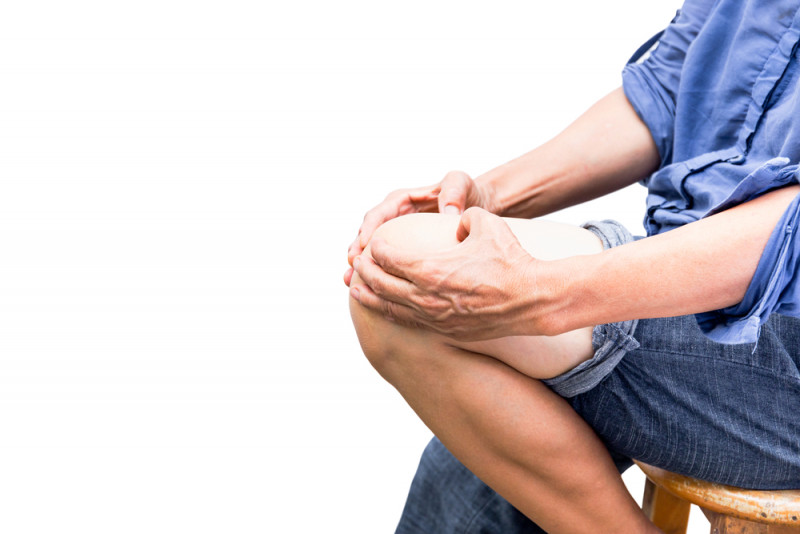Poorer Joint Health, Greater Pain Evident After COVID Lockdown

Joint pain significantly rose and overall joint health — particularly range of motion — diminished with limitations on physical activities during the COVID-19 lockdown for people with hemophilia and joint disease, a small study from Spain reported.
The study “Musculoskeletal Changes in Hemophilia Patients Subsequent to COVID−19 Lockdown” was published in the journal Healthcare.
Bleeding into the joints, known as hemarthrosis, is a frequent complication of hemophilia. It most often affects the knees, elbows, and ankles, and can progress into hemophilic arthropathy, a painful and restricting degenerative disease of the joints.
Without preventive (prophylactic) treatment, 85% of severe hemophilia patients develop joint damage at an early age.
The COVID-19 pandemic and ensuing lockdowns had a limiting effect on physical activity for people worldwide.
In this observational study (NCT04491318), researchers in Spain investigated the consequences of the COVID-19 lockdown on the frequency of hemarthrosis, and changes in joint health, pain, and range of motion in patients with hemophilic arthropathy.
Analyzed data covered 27 adults (median age of 42) diagnosed with either hemophilia A or B, and with hemarthrosis; all were recruited at the physiotherapy clinic of the Spanish Federation of Hemophilia.
The majority (82.5%) had hemophilia A and severe disease (70.4%). Most were using preventive treatment (70.4%), and about one-fourth (25.9%) had developed inhibitors or neutralizing antibodies against clotting proteins.
Patients were evaluated in February 2020 (pre-lockdown) and again in July 2020 (post-lockdown); Spain was in lockdown from March 14 to June 21 of that year.
Specifically, researchers evaluated the frequency of hemarthrosis and patients’ joint status using the Hemophilia Joint Health Score, in which higher scores indicate poorer joint function. The score range for each joint varies from zero to 20, and has a maximum of 124 points for all the six joints evaluated (knees, ankles and elbows).
They also assessed each patient’s perceived joint pain using a visual scale score (score of zero means no pain, while a score of 10 is maximum perceived pain) and range of motion. All measures were evaluated by the same physiotherapist.
Patient’s weight increased from a median of 80.50 kg (177.5 lbs) in February to a median of 82.50 kg (181.9 lbs) in July.
Post-lockdown, a significant reduction in range of motion, with evidence of deterioration, was reported in joints in the elbows, knees, and ankles.
Joint health scores all changed significantly, from a mean of 6.30 pre-lockdown to 6.72 post-lockdown for elbow joints, from 4.67 to 4.94 for the knees, and from 7.94 to 8.15 for the ankle joints.
Pain intensity also increased significantly in each of these joint areas. The ankle joint was the most affected, with pain intensity scores rising from a mean of 1.67 pre-lockdown to 3.26 post-lockdown. This rise in pain scores was followed by increasing scores in elbow joints (intensity score increase from 1.11 to 1.63) and knee joints (from 1.17 to 1.67).
Researchers also assessed the moment at which a patient perceives pain as pressure is applied to a given area. Known as the pressure pain threshold, it corresponds to the minimum amount of pressure that causes pain, and was found to have dropped during the lockdown across all joints.
The frequency of clinically diagnosed hemarthrosis between February and July, 2020, increased in the elbows (0.19 vs. 0.33), but fewer joint bleeds were found in the ankles (0.24 vs. 0.11).
Increase in pain across the elbow and ankle joint, and changes in flexion for the ankle joints remained statistically significant after adjusting for hemophilia’s severity among patients.
“Lockdown due to the COVID−19 pandemic deteriorated joint health, increased pain intensity, and reduced pressure pain threshold and range of motion in adult patients with hemophilic arthropathy,” the researchers wrote, noting such changes “under normal conditions” for patients with hemophilic arthropathy “do not take place in such a short period of time.”
A “total interruption of everyday activities” in this population of hemophilia patients “adversely affects pain and mobility,” the team concluded.
“The promotion of educational programs and access to non-face-to-face interventions [like remote physiotherapy] … could help to prevent the rapid deterioration of joint health in patients with hemophilic arthropathy.”






